Tariffs: strategy masquerading as chaos
Why sudden change in heart for Pakistan? What has made us go from pariah to partner?

At first glance, Donald Trump's imposition of tariffs on various countries seems random and capricious. But, believe it not, there is method behind this seeming lunacy. Not widely known is that Trump is advised on matters related to trade policy and tariffs by a team of well-regarded economists.
In a recent interview Yanis Varoufakis, an economist and former Greek finance minister, revealed that he has read academic papers written by the economists on this team and, while not in agreement with them, found them to be analytically robust.
So, what is Trump's game? Let's start by looking at the likely consequences of the tariffs for the US none of which seem beneficial to the country. Among the consequences are higher consumer prices because tariffs are really a tax on imports which is often passed on to consumers.
Another impact is the likely decline of GDP. The Tax Foundation, a think tank, estimates that US GDP will drop by 0.8% from tariffs alone and another 0.2% decline from foreign retaliation. The same think tank also estimates a fall in US market income by 1.3% in 2026 affecting wages and investment returns.
There is also likely to be increased job market volatility. Some sectors such as domestic manufacturing may benefit but others especially those reliant on global supply chains could see layoffs or slowed hiring.
Then there is the issue of revenue versus risk. The Tax Foundation estimates that tariffs could raise $2.4 trillion over the next decade. But this is balanced by a reduction in long run GDP. According to a University of Pennsylvania — Wharton study the tariffs could reduce long run GDP by 6% and wages by 5% with a $22k lifetime loss for middle-income households.
And these are just the consequences for the US economy. Internationally, there will be global trade disruptions. Among these are retaliatory tariffs. Countries such as China, Canada and the EU have already announced countermeasures affecting some $330 billion in US exports.
Businesses will be forced to reconfigure their supply chains. This may shift sourcing and production to avoid tariffed goods leading to inefficiencies and increased costs.
This is not a pretty picture. So why is Trump pressing on with his big, beautiful tariff policy? The answer perhaps lies in that he is using tariffs not just as economic tools but as strategic and political levers to exert geopolitical pressure on countries that do not tow the US line.
Consider the following: Trump's recent imposition of a 50% tariff on Brazilian goods was explicitly linked to the country's prosecution of former president Jair Bolsonaro. The move appears designed to pressure Brazil politically while exempting sectors such as aircraft and energy to avoid disrupting US interests.
Tariffs on some countries like China, Mexico and Canada have been framed by Trump as related to national security — citing issues like fentanyl smuggling and illegal immigration. Such framing allows for broader executive authority and clearly signals strategic intent.
There are also domestic political considerations. Trump repeatedly claims that tariffs are "making America great and rich again," using them to rally his base and reinforce his economic nationalism narrative.
The president's "Liberation Day" rollout and "90 deals in 90 days" campaign suggest a choreographed effort to align trade policy with political milestones.
In the context of what is happening closer to home: The US has long criticised India's steep import duties — some reaching 50% on items like apples and corn. Trump has characterised these (incorrectly since tariffs are monetary) as "obnoxious non-monetary trade barriers".
India has long been a close friend of the US and trade talks have been going on between the two allies. So, what prompted Trump to suddenly impose a 25% tariff on India? The answer it turns out has nothing to do with the bilateral bonhomie between the two countries. Rather it is connected to the Russian-Ukraine war. As the Russians continue their advance into Ukraine and it becomes clear that they are going to win this war, the US is becoming desperate to somehow prevent this from happening.
The tariffs on India, one of the largest importers of Russian oil in the world and hence a key source of income for the Russians, are intended to send a single message: Stop. This is a clear example of the use of tariffs as a strategic weapon. The question now is: Will Modi bend to this message from the leader of the "free world"? Time will tell.
Interesting also is the favourable treatment that Pakistan seems to be receiving. At 19% Pakistan now faces the lowest US tariff rate in South Asia. Surprising because we have had our differences with the US related mainly to terrorism. Not only are we being favoured by this "lower" tariff we also seem now to have a sweetheart deal with the US to develop our "massive" oil reserves. So why the sudden change in heart? What has made us go from pariah to partner?
Cynics would cite several reasons. One of these is countering China. Pakistan's potential mineral wealth such as copper, lithium and rare earths is seen as a way to reduce US dependence on China. Another is Middle East mediation. Pakistan's close ties with Iran, as witnessed by the recent visit of President Pezeshkian, make us a potential back channel for US diplomacy amid Israel-Iran tensions.
And finally, there is World Liberty Financial (WLFI). This is a high-profile project closely associated with the Trump family whose purpose is to promote US backed Stablecoins and reshape the global crypto currency landscape.
Proof of Pakistan's importance to the project is high level meetings that have taken place recently between WLFI executives with, among others, PM Shehbaz Sharif, Field Marshal Asim Munir and Finance Minister Muhammad Aurangzeb. Further, a landmark letter of intent between WLFI with the Pakistan Crypto Council was signed in April this year.
Trump is clearly using tariffs to pursue a panoply of American interests — economic, political, strategic and diplomatic. This in itself is not a problem. The problem is Trump's proclivity to change his mind on a dime; tariffs and the date of their implementation will be announced. Then at midnight, just before they take effect, the tariff or the date or both will be changed. This happens time and again.
Industries and supply chains around the globe which normally operate on long term planning horizons are suddenly and brutally forced to change their plans. This subjects the global economy, already teetering on the edge of a cliff, to immense stress.
Consider this: Global debt reached the unprecedented level of $325 trillion in early 2025. This is roughly 333% of global GDP. Just a little push will send it spiralling into the abyss. One has to wonder whether Trump's whimsical game of tariffs will deliver that final push.
THE WRITER IS CHAIRMAN OF MUSTAQBIL PAKISTAN AND HOLDS AN MBA FROM HARVARD BUSINESS SCHOOL

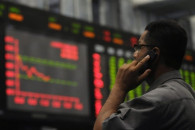
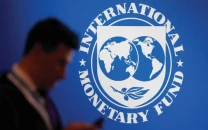
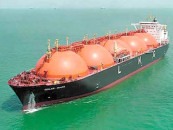



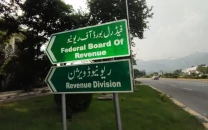

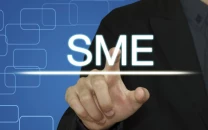

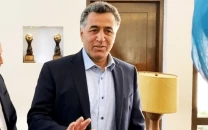
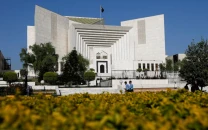
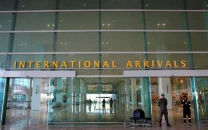








COMMENTS
Comments are moderated and generally will be posted if they are on-topic and not abusive.
For more information, please see our Comments FAQ